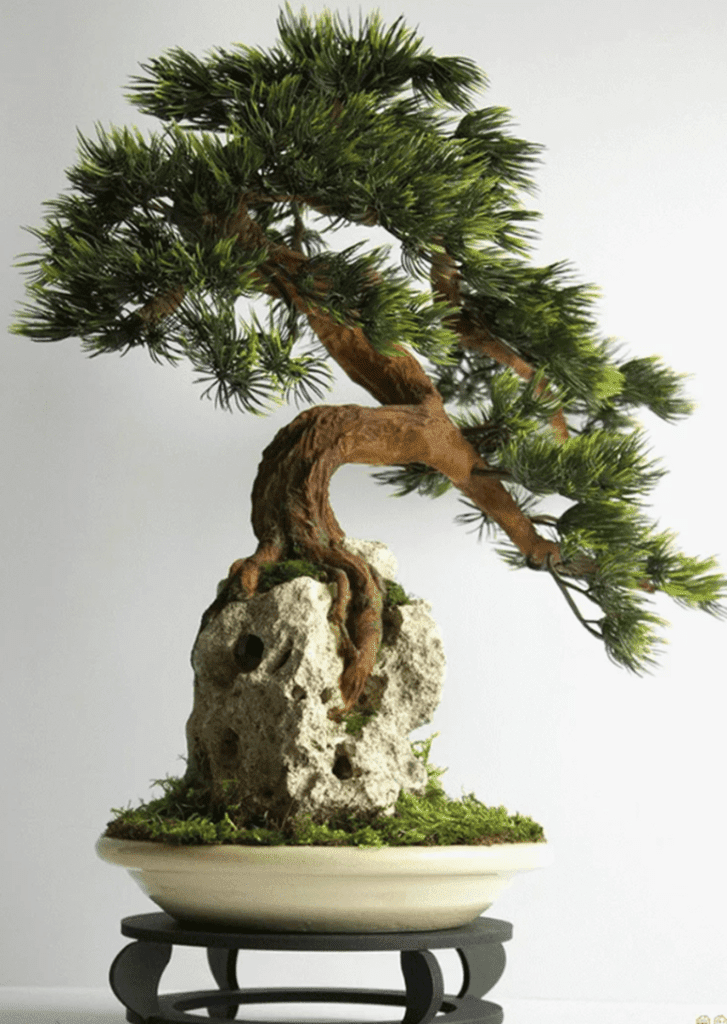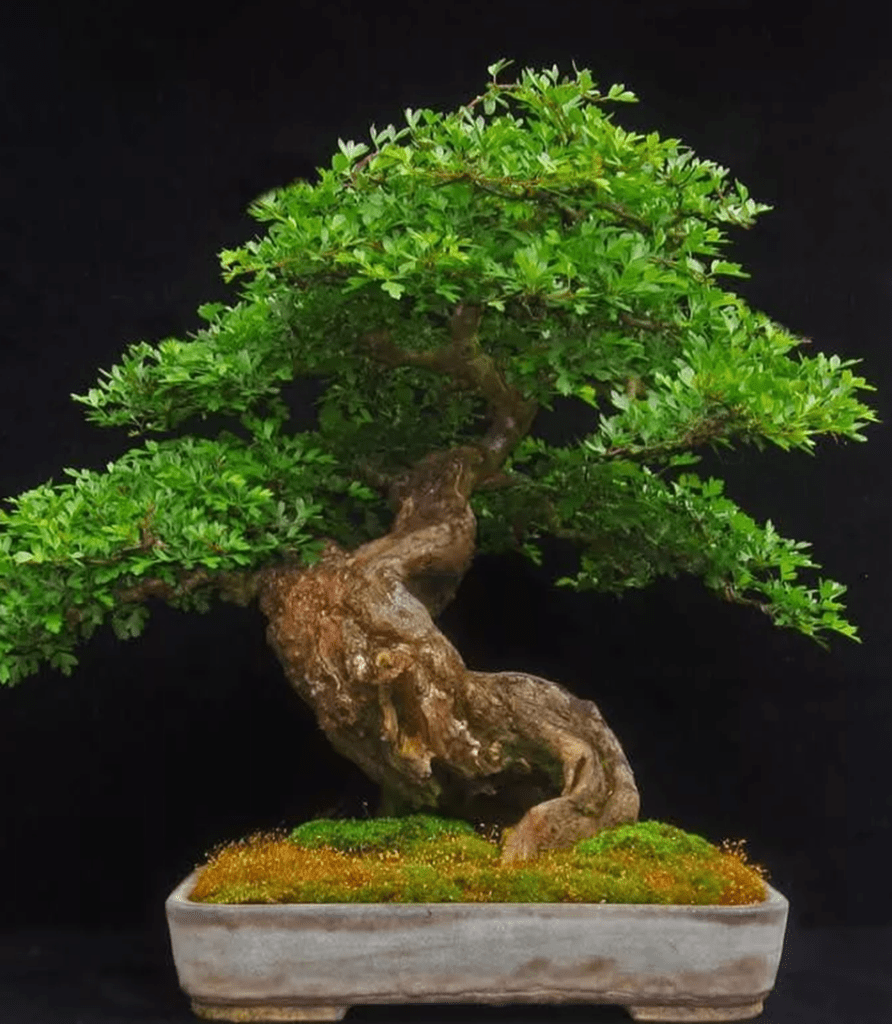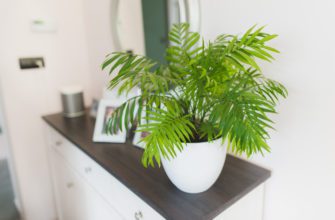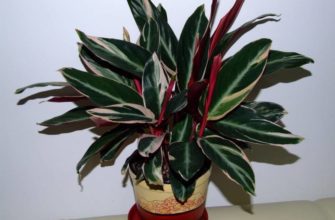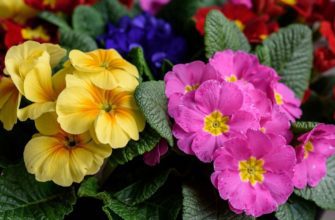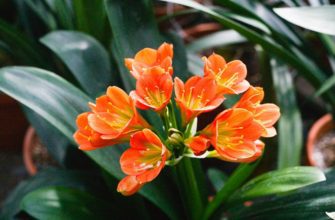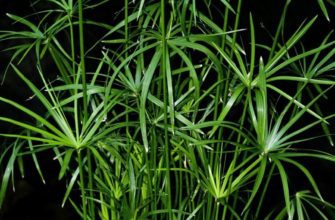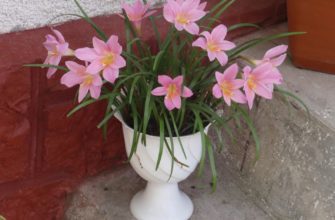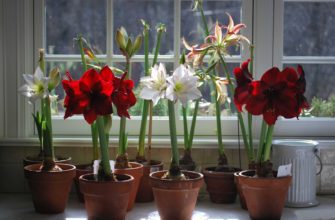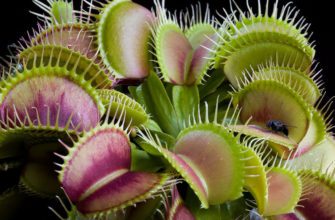Bonsai trees are small potted plants that resemble adult large trees growing in the wild in their shape and appearance. They often have a bizarre crown, roots and trunk formed under the influence of the elements - wind, sun and water. However, in fact, bonsai is a whole art dedicated to growing, caring for and shaping dwarf trees.
- History of Bonsai
- The term "bonsai"
- Historical methods of formation
- Bonsai Masters
- What is bonsai?
- What are bonsai trees
- Direct
- Curved
- Inclined
- Cascade
- Balloons
- What trees are suitable for bonsai
- Deciduous
- Blooming
- Conifers
- How to choose the right pot
- How to grow
- Where to start?
- Growing Bonsai from Seeds
- Start with seedlings
- How to shape bonsai
- Tools
- The main problems and mistakes that beginners face
- Growing Tips
History of Bonsai
It is believed that this art originated in Japan. In fact, the birthplace of dwarf trees is China. But it is worth noting that the form that this art has acquired and has become popular today was developed in Japan, over many centuries, and has its own aesthetics and terminology.
The term "bonsai"
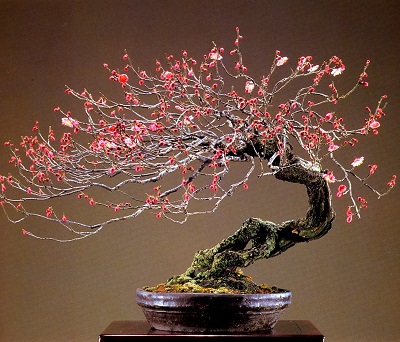
It is known that even in ancient Egypt they were engaged in growing plants and trees in flower pots. However, the term "bonsai" comes from the Chinese language, wheregrowing dwarf treescalled "penjing" or "penzai". The exact dates of the origin of penzai are unknown, but the first mentions date back to the Chinese Tang Dynasty (600 AD). It is assumed that penjing was well developed by that time, as scrolls with fairly detailed descriptions of this art have been found. The earliest images date back to 706, they were found in 1972 in a mausoleum, on the walls of a corridor that leads to the tomb of Prince Zhang Huai.
It is believed that the art first appeared in Japan in the 6th century, when Buddhist students, returning from China, brought miniature trees. They gradually became a collectible item for wealthy merchants, samurai and officials. The word pensai eventually transformed into bonsai, although its essence did not change. Samurai loved to meditate while contemplating nature, it calmed their nerves and helped them understand themselves, and dwarf trees were perfect for this. This type of art became truly popular in the 16th-17th centuries with the development of foreign trade in Japan. By that time, Chinese masters had developed about thirtystylesThe Japanese improved them and began to develop the art of miniature trees themselves.
Historical methods of formation
Earliertrees were shapingby pinching, cutting and stretching. This method is still used by many craftsmen today. But everything changed after World War II, whencopper wirebecame available and many began to use it to form bonsai.
In the second half of the 20th century, with the help of wire and new methods of growing bonsai, many beautiful specimens were created. Due to the large number of exhibitions, dwarf trees quickly transformed and became popular among enthusiasts all over the world. In the early 70s, there were already hundreds of these wonderful plants on sale. Bonsai became expensive gifts, and were presented to people who had no idea how to care for trees. Unfortunately, due to people's ignorance, many of them died. At that time, bonsai were in short supply, but now they can be purchased everywhere.
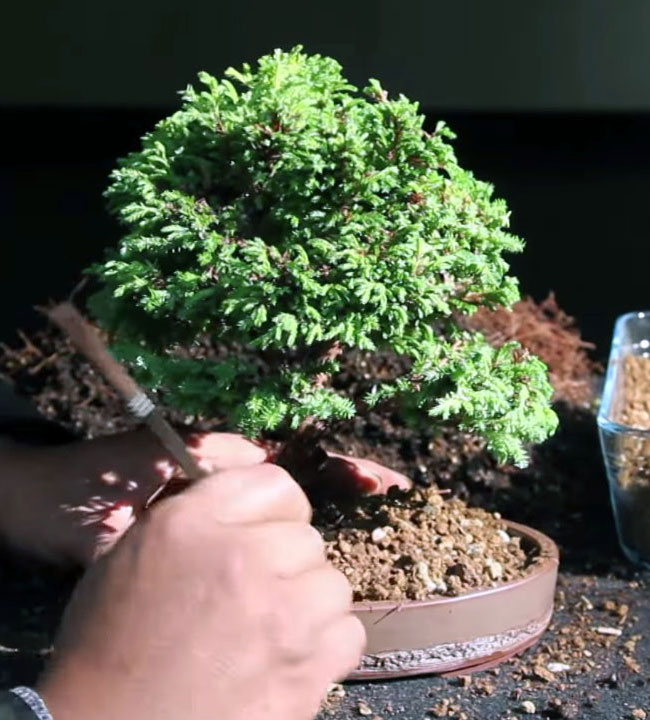
Bonsai Masters
Thanks tooutstanding specialists, such as John Yoshio Naka, Kimura and Peter Adams, this art became popular on different continents. At the end of the 20th century, many bonsai clubs emerged, and experienced masters appeared in almost all countries. Today, hundreds of thousands of amateurs and masters are learning the art of bonsai. And it must be said that it is still spreading, there are more than 1,200 books on bonsai in 26 different languages. Thus, the art of growing dwarf trees has ceased to be a purely Japanese or Chinese hobby.
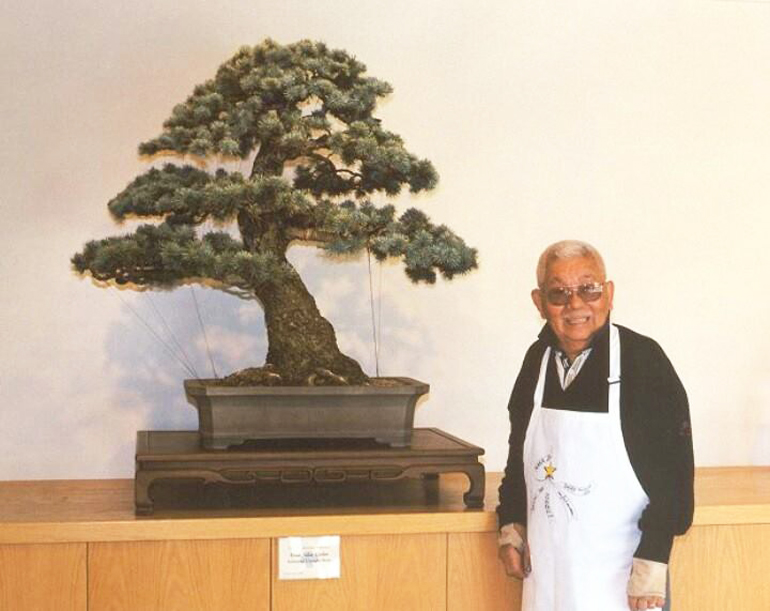
What is bonsai?
The word "Bon-sai" is a Japanese term that literally means "container plant". This art form has its origins in ancient Chinese gardening and has been modified over time by the influence of Japanese Zen Buddhism.
Bonsai trees are different from regular houseplants. Their distinctive features are:
- thick trunk of the plant - bonsai trees in appearance resemble real old trees, only reduced in scale
- the crown of a dwarf tree should be formed in a special way and resemble a tree growing in its natural environment
- Bonsai often have superficial roots - Nebari
- A distinctive feature of a bonsai tree is the presence of a wide, beautiful pot, specially selected for the chosen tree
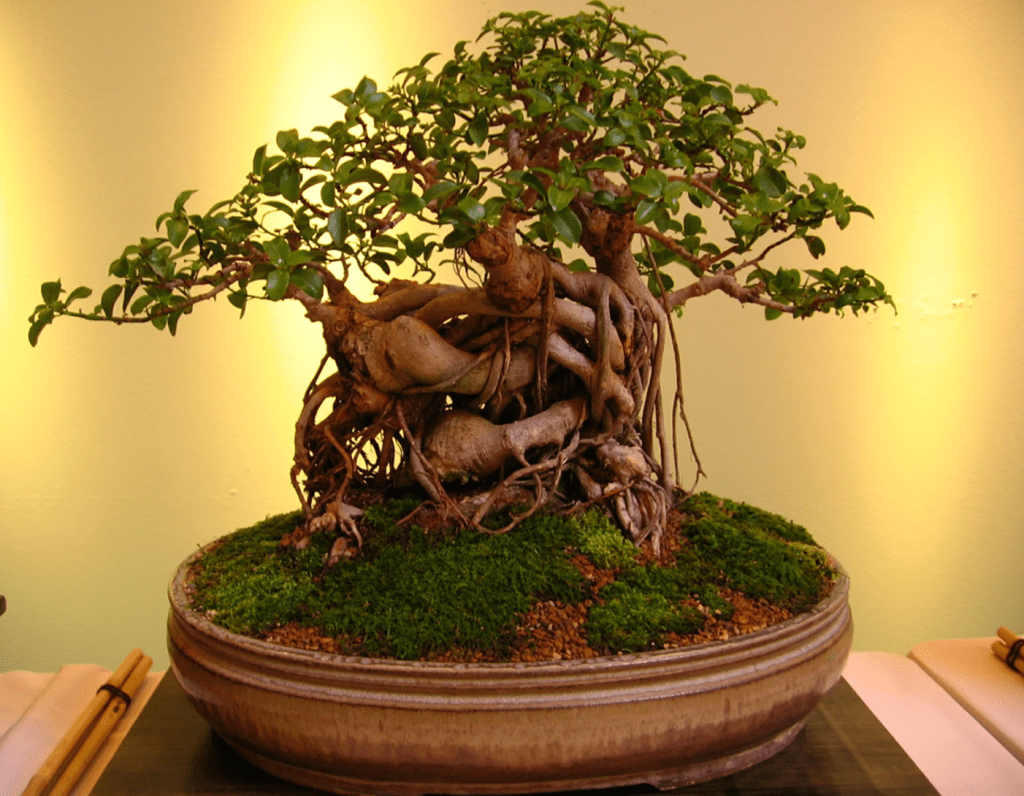
What are bonsai trees
The shape of the tree depends on the chosen style. There are 5 main styles of bonsai formation. You can choose the appropriate style either immediately or during the growing process.
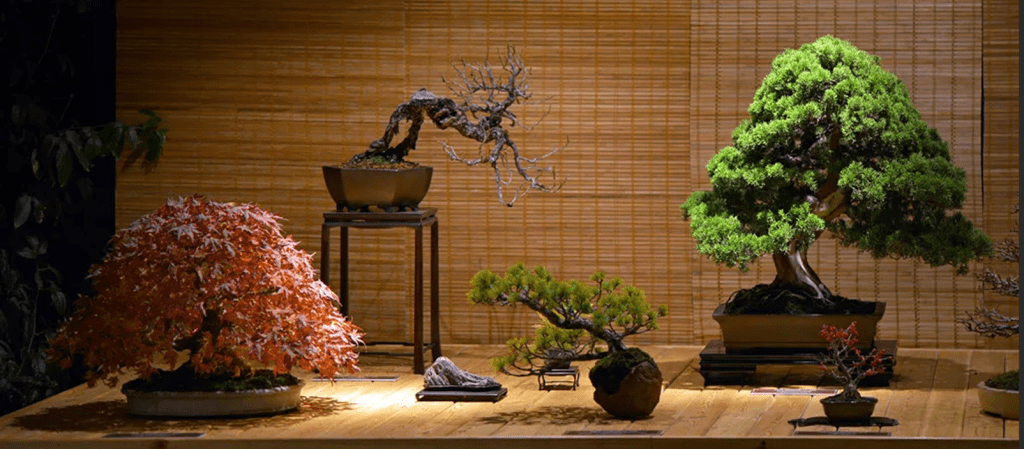
Direct
The straight style sounds like chokkan. For this style, it is important that the tree trunk remains straight and vertical throughout its life. This is ensured by specially placing wire on the trunk and careful care of the tree. 5-6 main branches are left on the trunk.

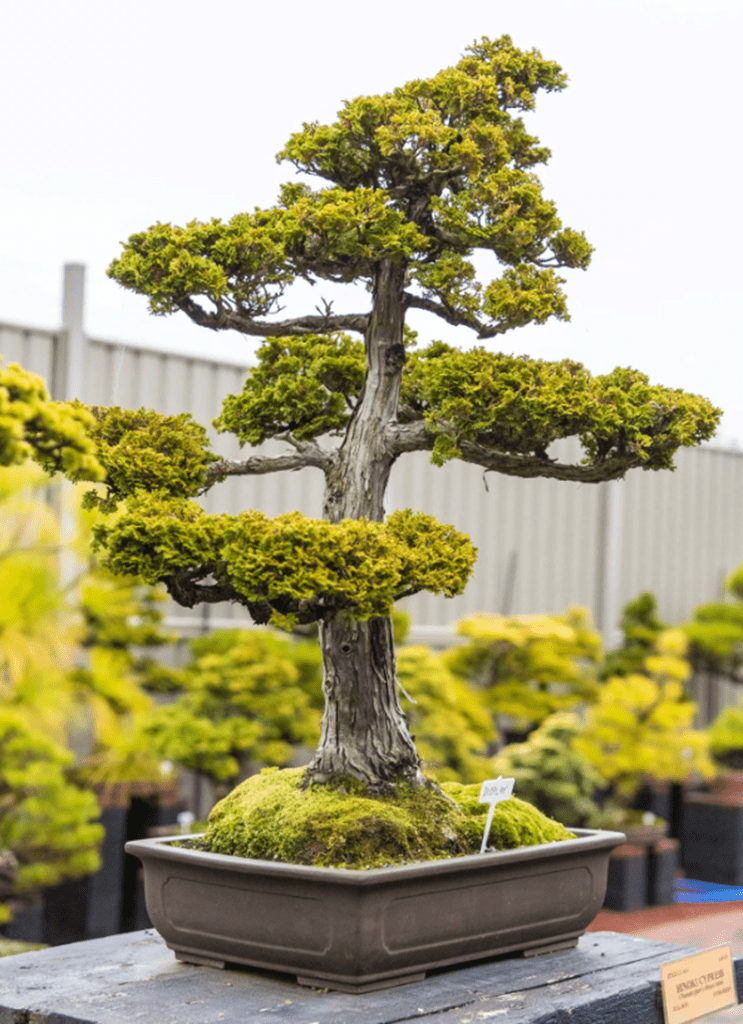
Curved
The most popular style is (moyogi). Its popularity is due to the relative simplicity of shaping the bonsai trunk. This style is often chosen by beginners. A tree with a trunk that takes the shape of the letter "S" is considered beautiful.
Inclined
The meaning of this style is to show the long-term impact of a strong wind or other element on a tree, under which the trunk of the tree has bent. Shakan or Syakan is distinguished by a strong tilt of the trunk, which requires the correct selection of the pot weight.
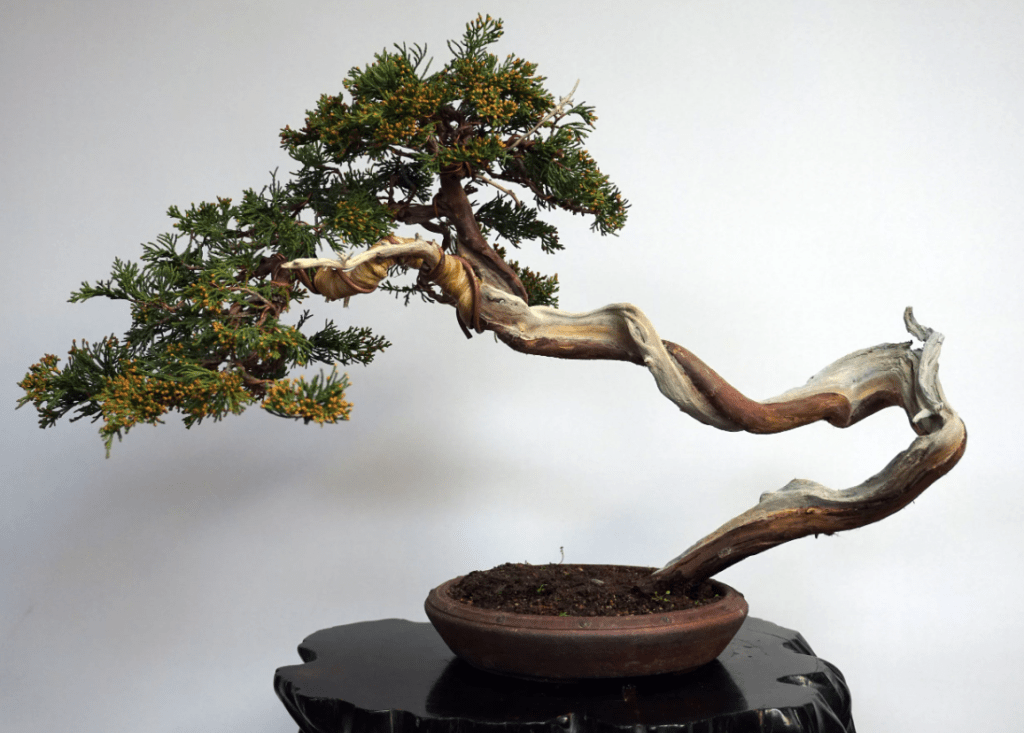
Cascade
Kengai. A plant formed in this style has a crown in the form of cascading bunches of greenery. Very often, when forming it, the tree trunk is directed downwards - as if the tree is growing on a ledge or rock. Growing in this style requires a lot of trouble and effort when applying wire to the trunk. However, the result is worth it.
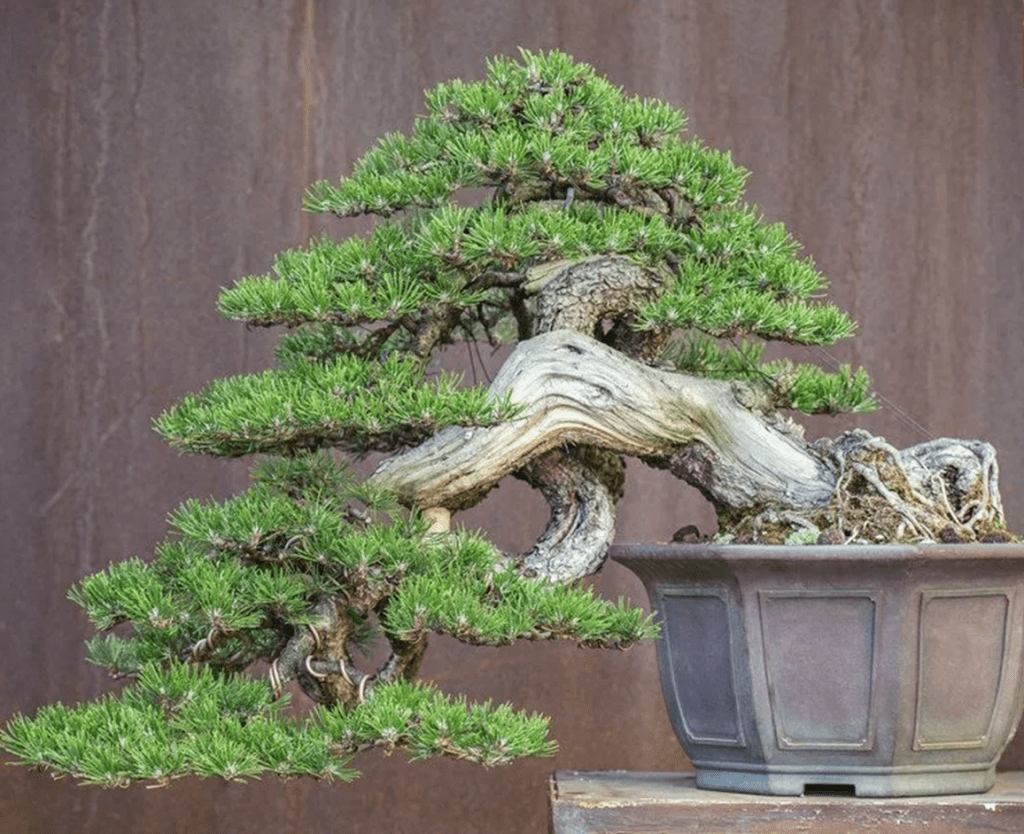
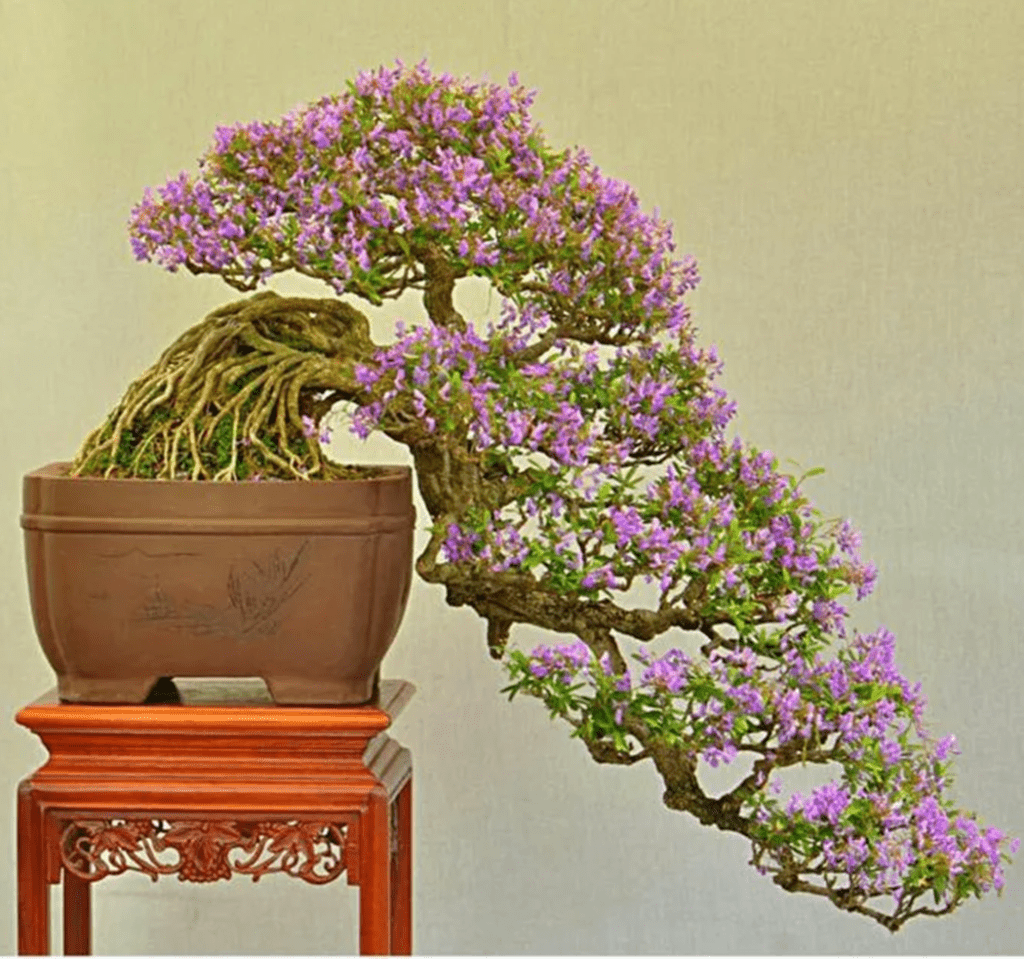
Balloons
This style has pronounced dead areas of the trunk - sharī and jinī.
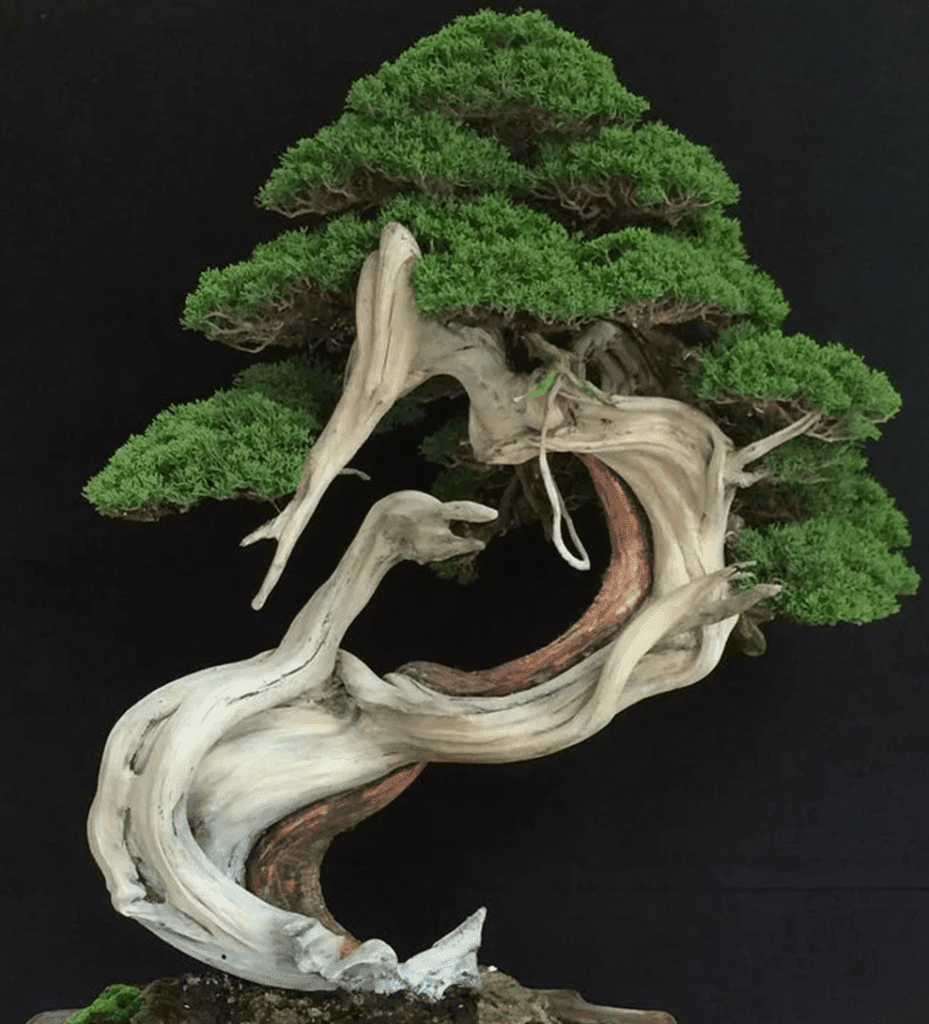
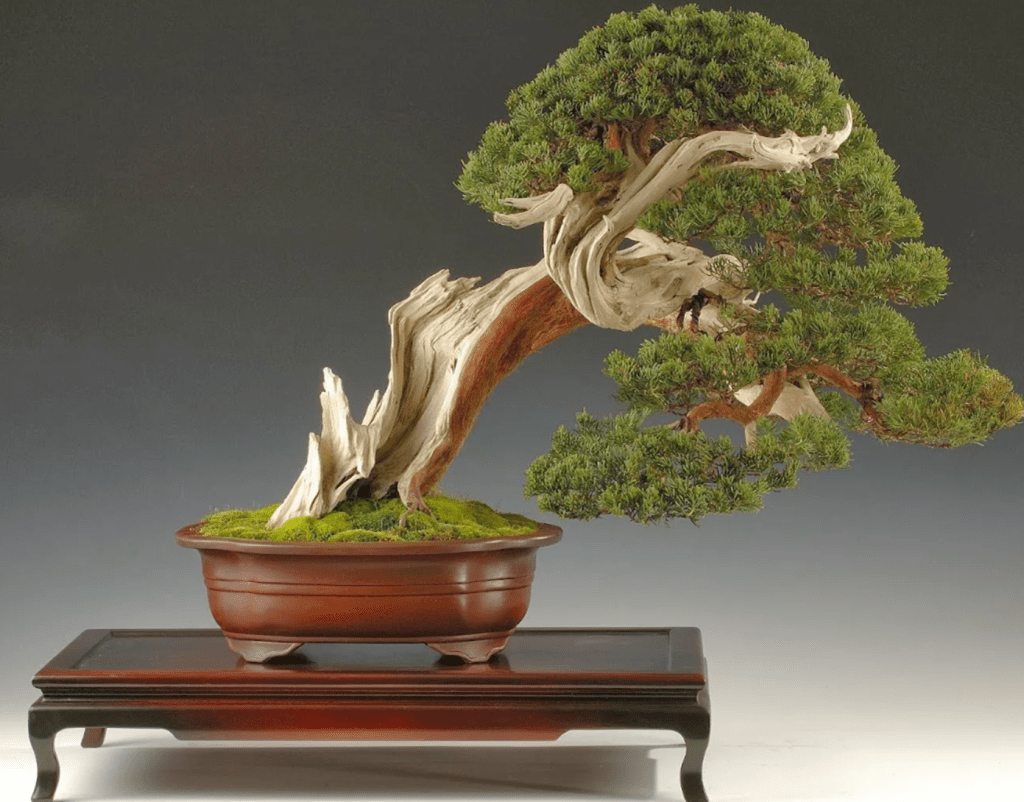
There are many more different styles of bonsai tree formation that are based on the styles described above.
What trees are suitable for bonsai
Experts recommend choosing a tree that grows in your region. This will make the process of growing and caring for the bonsai easier. However, you can easily grow a tree that grows in a different climate with proper care. Beginners are advised to choose fast-growing tree species (oak, birch, spruce, larch, pine) to gain growing skills and not lose interest, watching the growth of a dwarf tree.
Deciduous
Oak


Birch
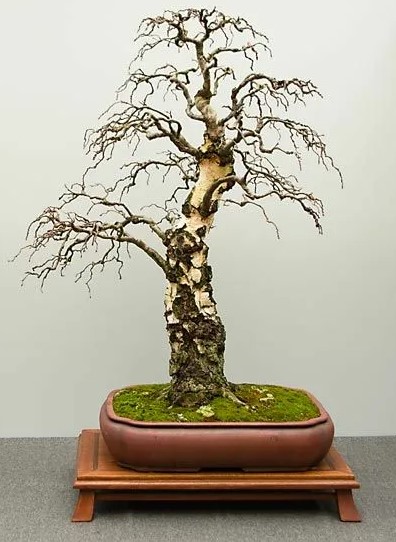
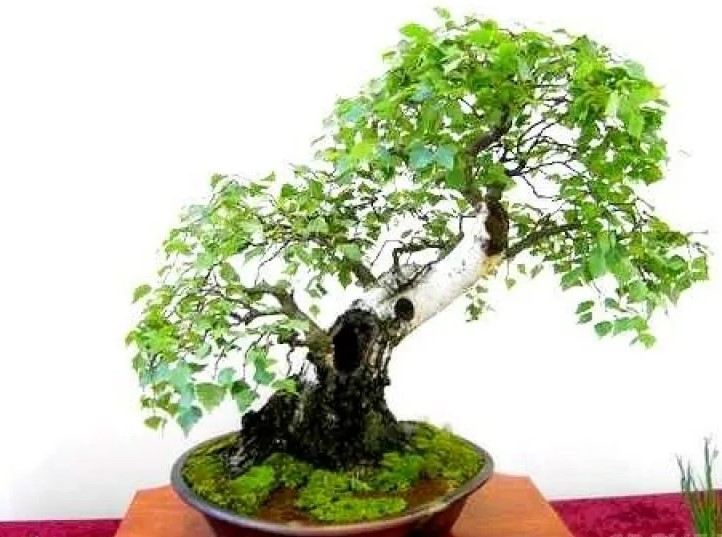
Maple
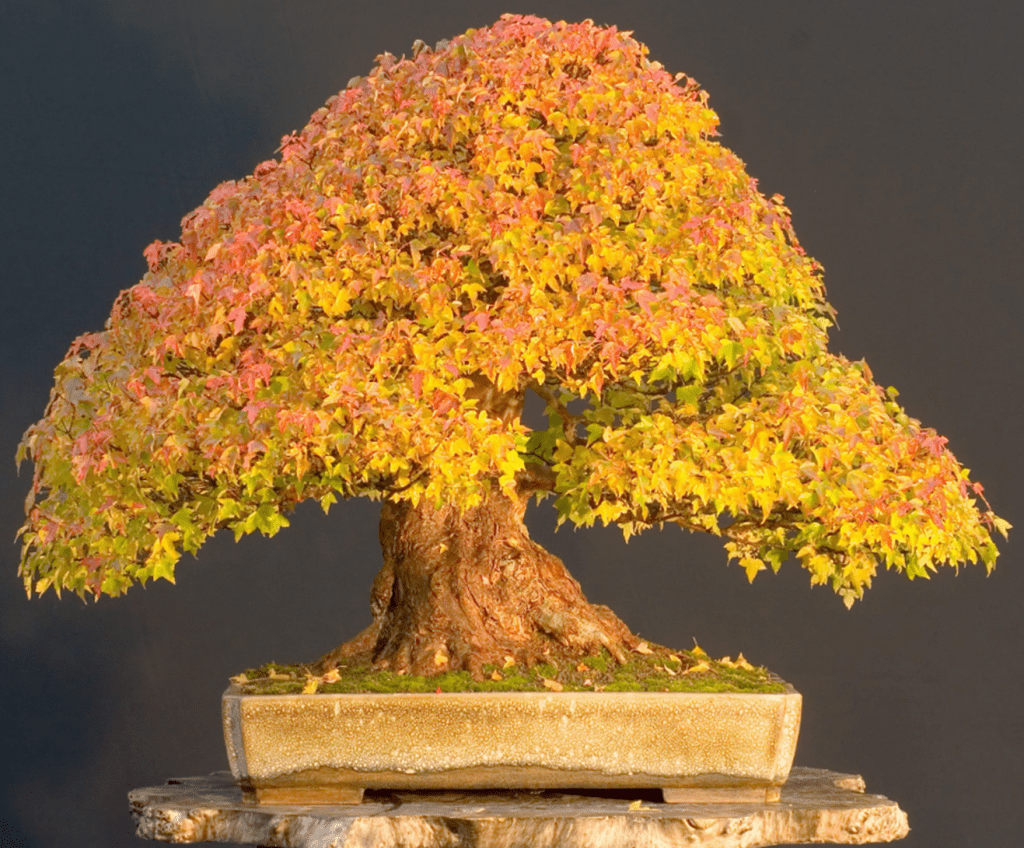
Myrtle
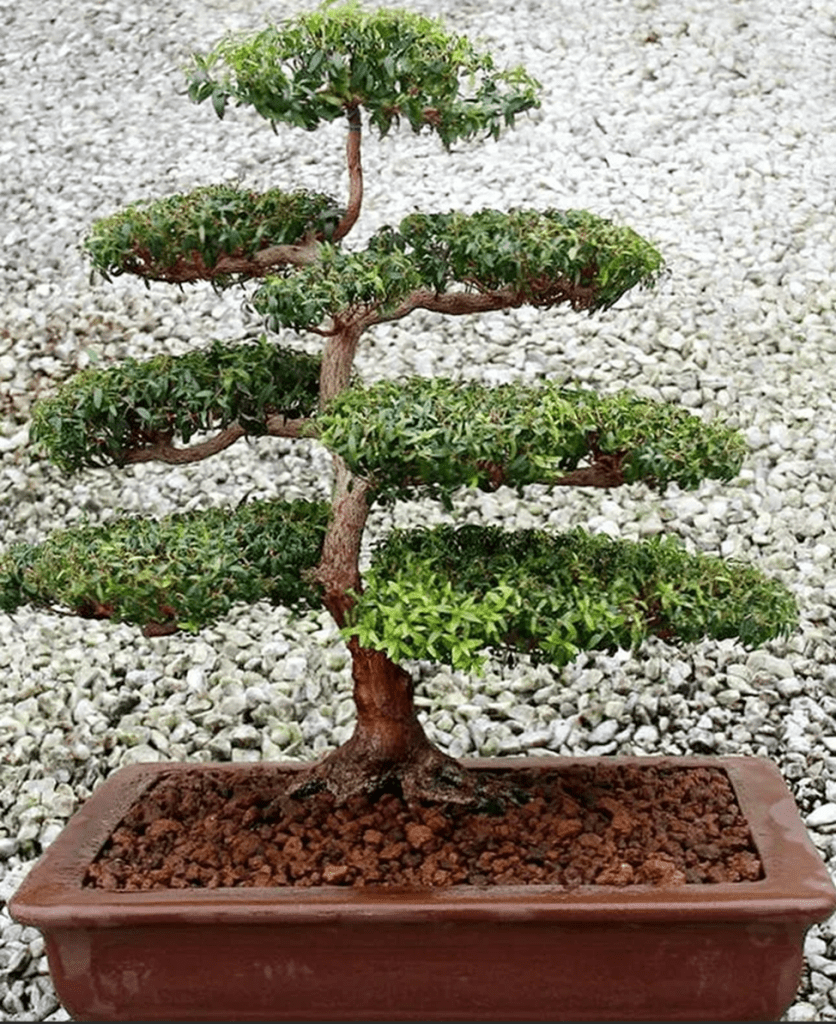
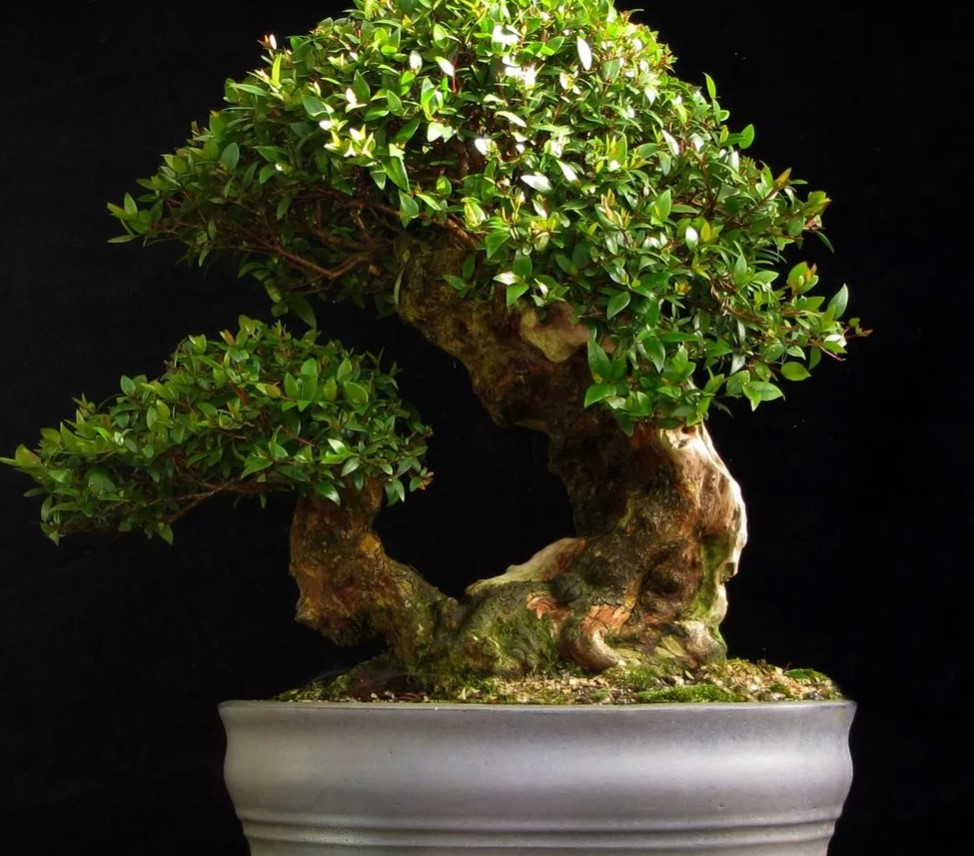
Blooming
Sakura

Apricot


Apple
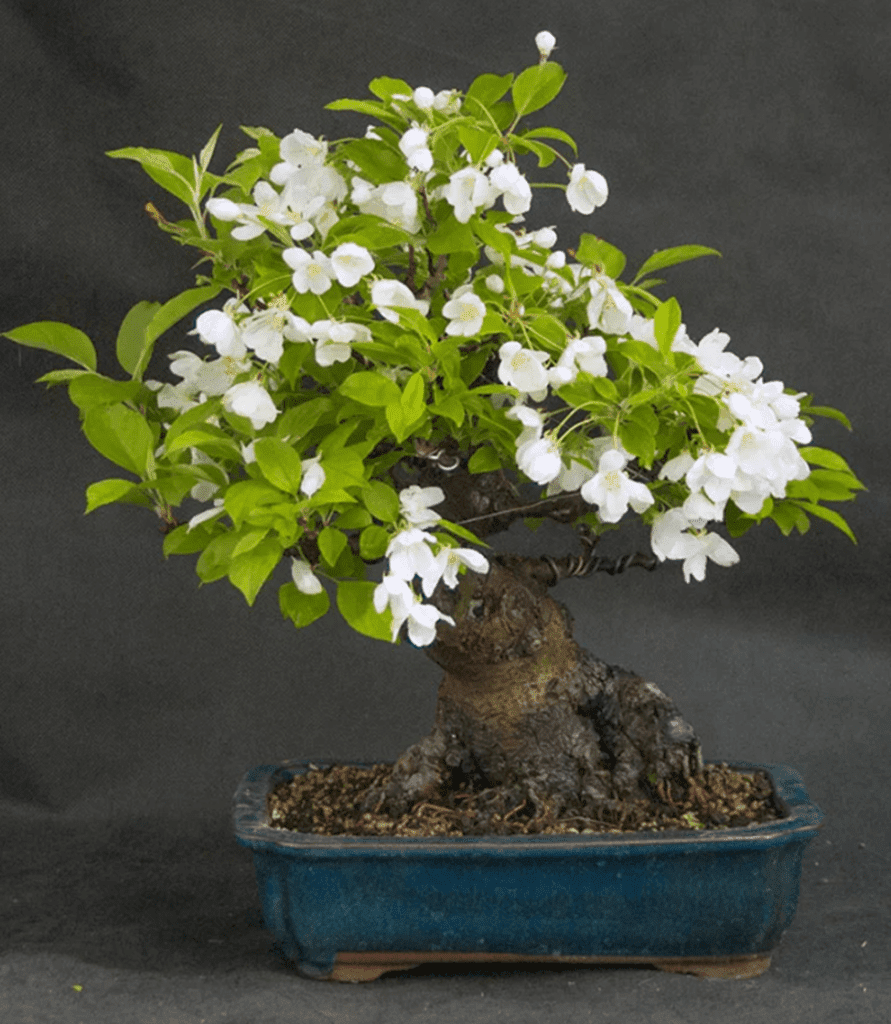
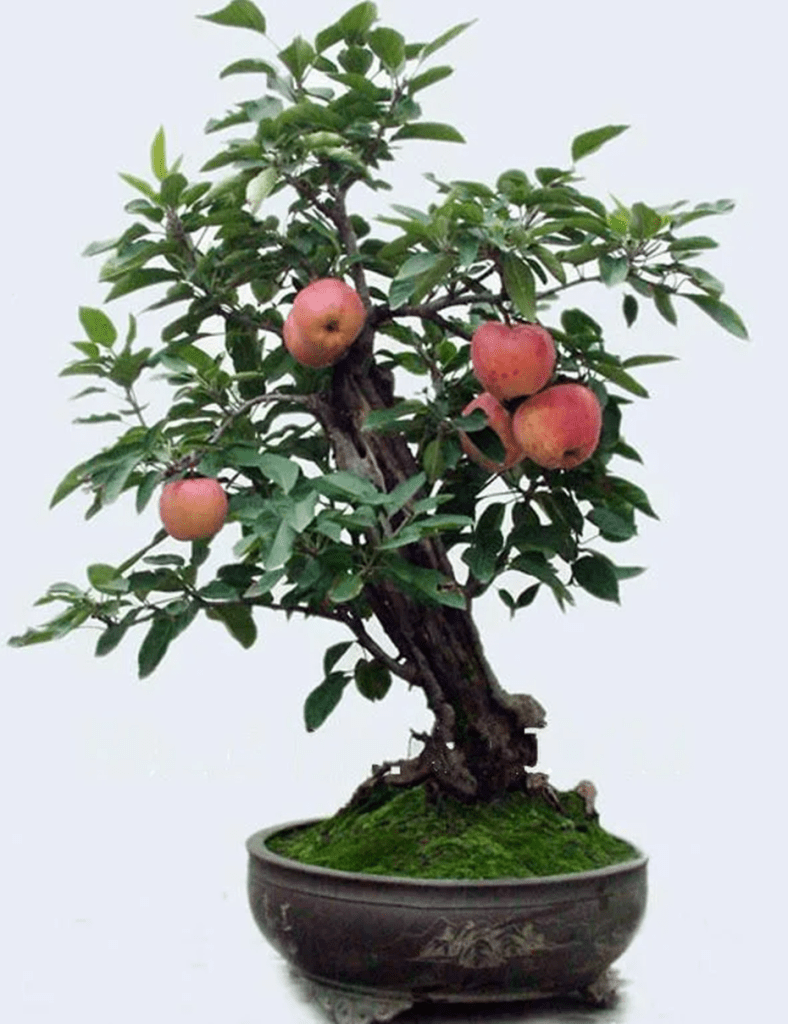
Lilac

Conifers
Spruce

Cedar
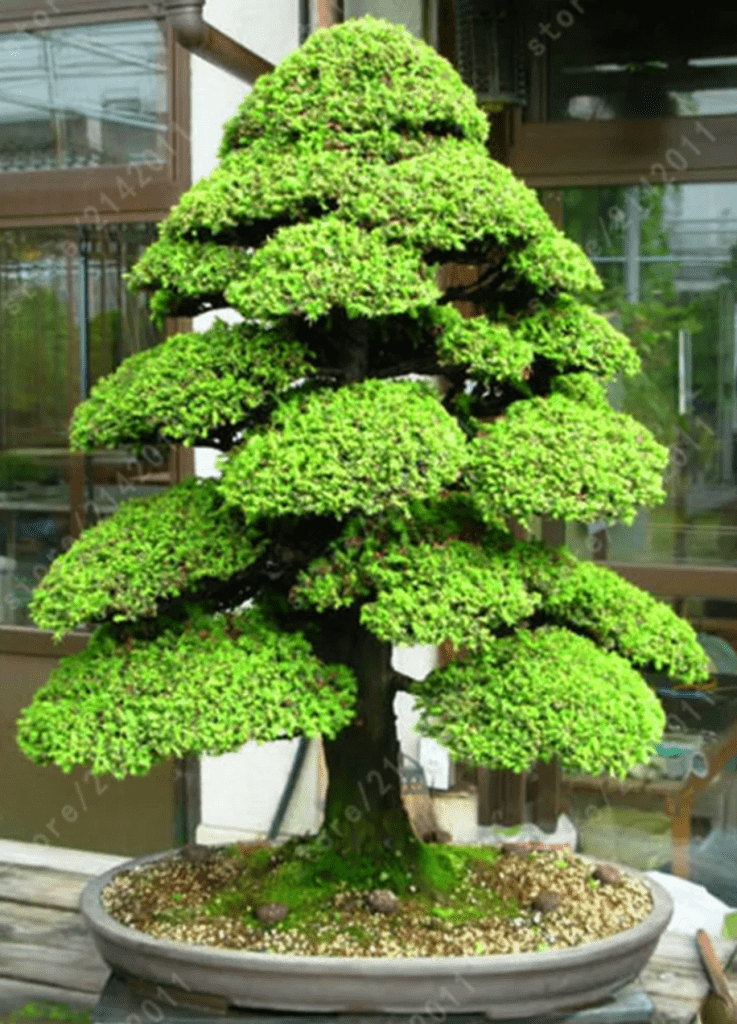

Larch

Juniper
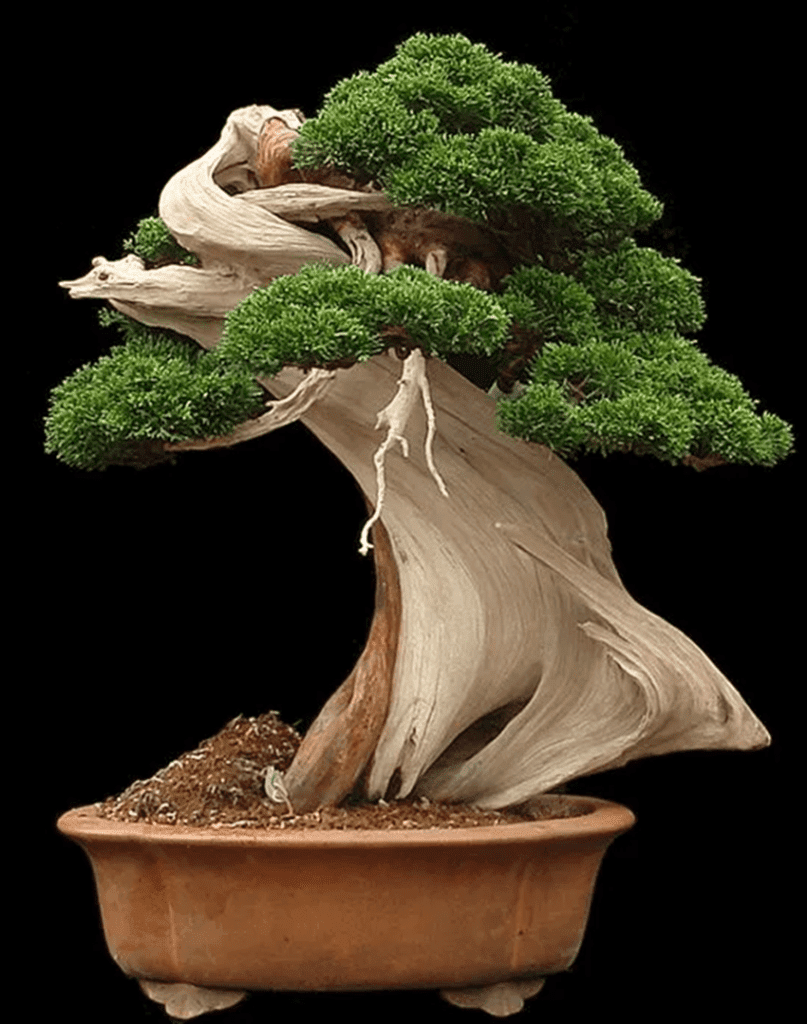
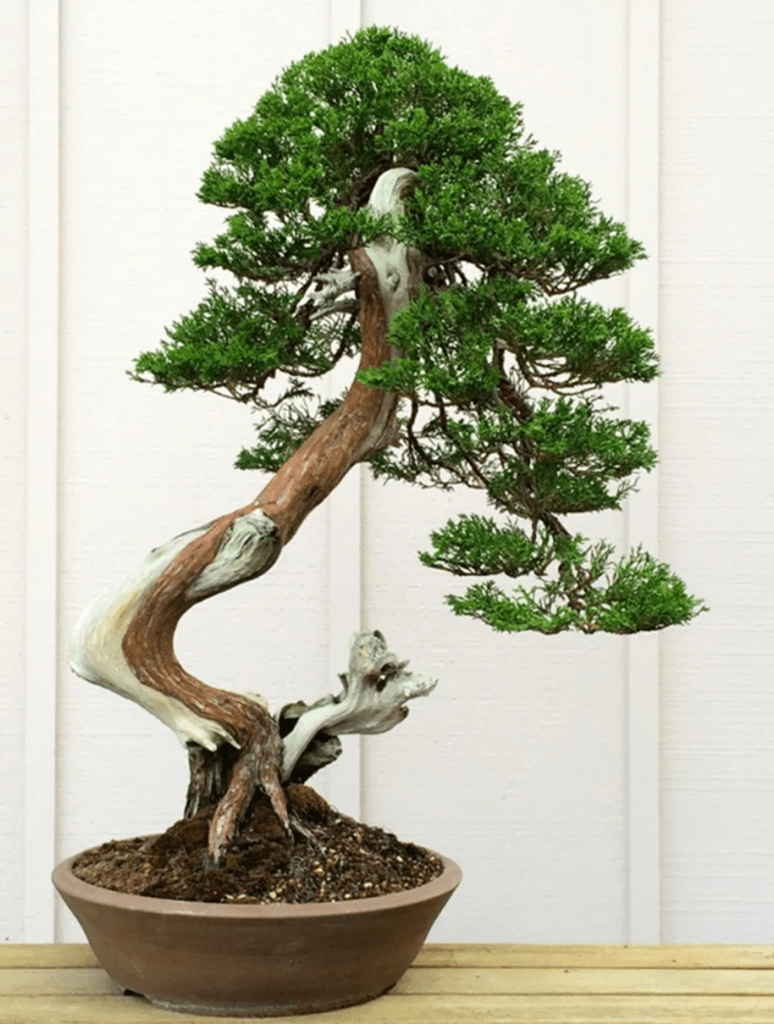
How to choose the right pot
The choice of pot is where you need to start growing bonsai. The composition depends on the right choice of pot. For example, for group bonsai, you should choose a shallow oval or rectangular pot. Deep pots are suitable for trees with powerful roots, such as in the cascade style. There should be drainage holes (3-4 pcs.) at the bottom of the pot to drain excess water. The diameter of the holes is 4-6 mm.
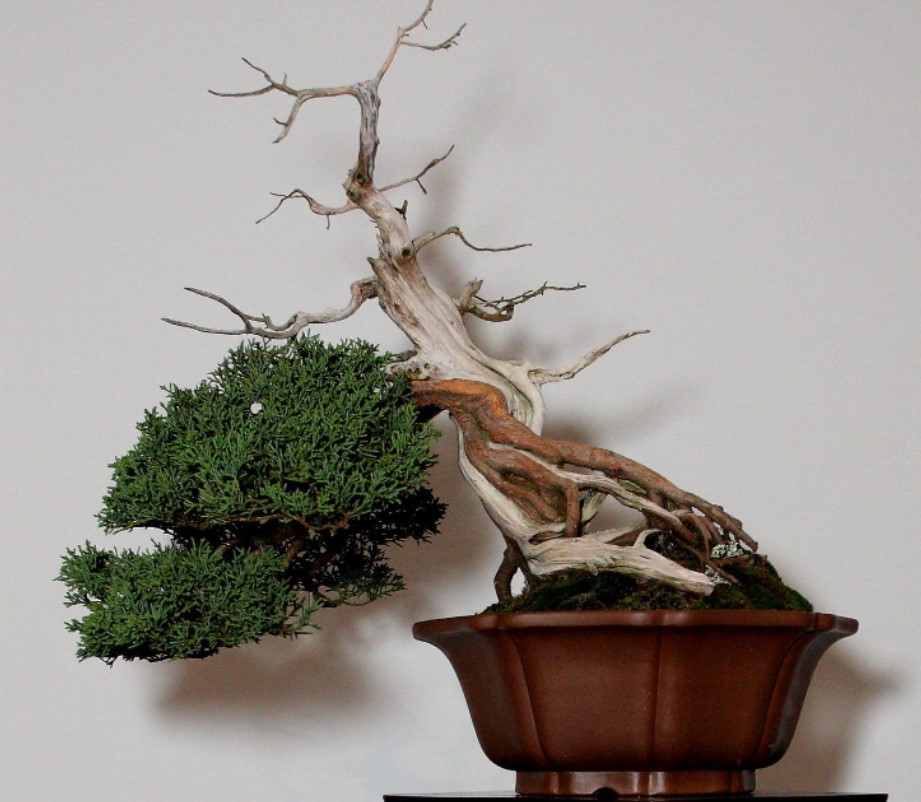
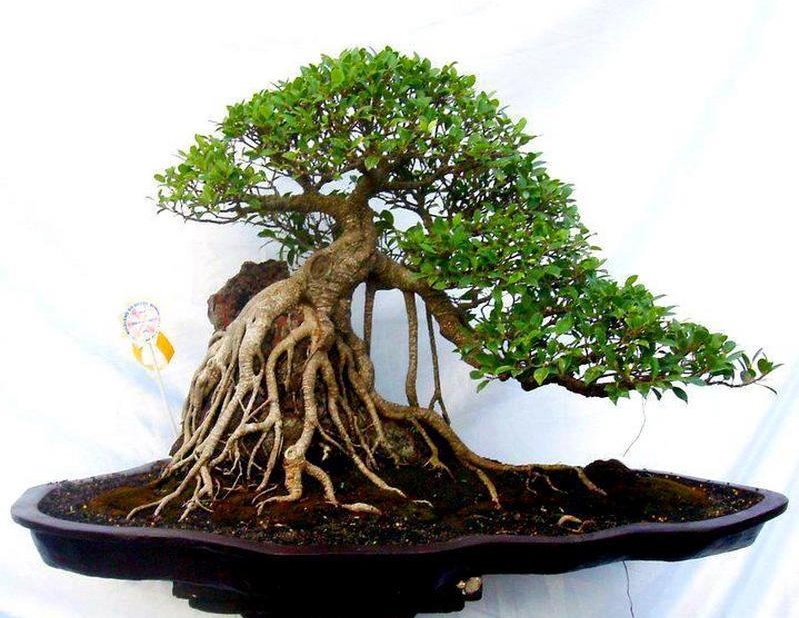
Attention! Be sure to attach a net to the bottom of the pot so that the soil does not spill out of the pot. You also need to attach a piece of wire to the bottom so that the plant roots can cling to it.
When choosing a pot, its color is important. It should be in harmony with the plant. For deciduous plants, specialists choose light-colored pots, conifers are grown in matte dark and brown ones, and flowering plants are grown in bright glossy pots.
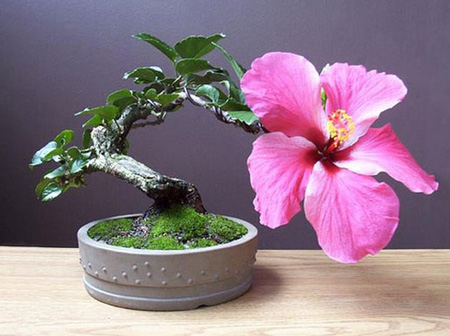
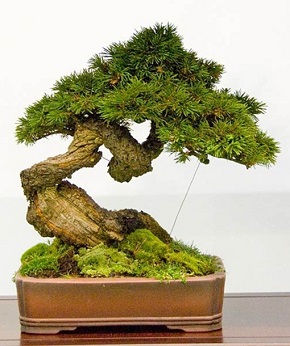
Enamel should only be on the outside of the pot; inside is not allowed.

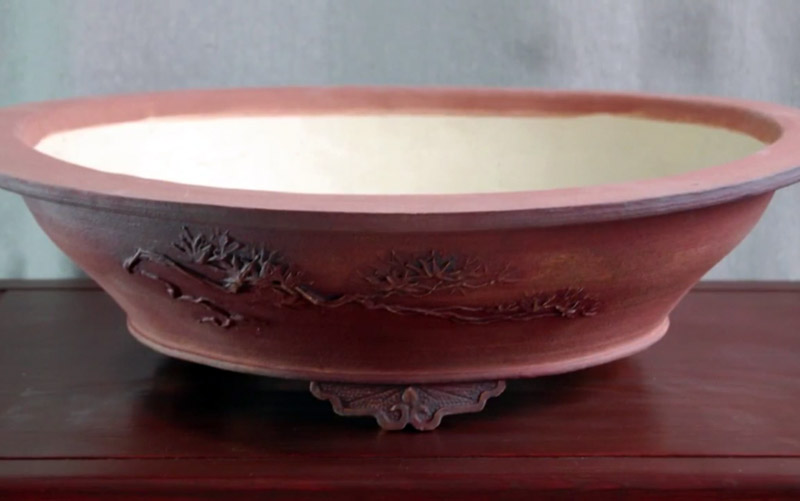
How to grow
Growing bonsai is an art. Before you start growing, we recommend that you familiarize yourself with the sections of this site on cultivation, formation And care for bonsai.
Where to start?
You can begin your acquaintance with the art of bonsai at any stage - either start with seedlings or cuttings, gradually growing your tree and giving it the desired shape and style, or buy a ready-made tree, bypassing the stages of growing and forming the trunk and crown.
If you want to dive into the art of bonsai from planting a tree to creating a real masterpiece, you should first understand the methods of growing. There are several methods.
Growing Bonsai from Seeds
There are no special seeds, it's all a marketing ploy to sell seeds of ordinary plants at a higher price.
Growing bonsai from seeds is a complex process and it is better for beginners to start with seedlings.
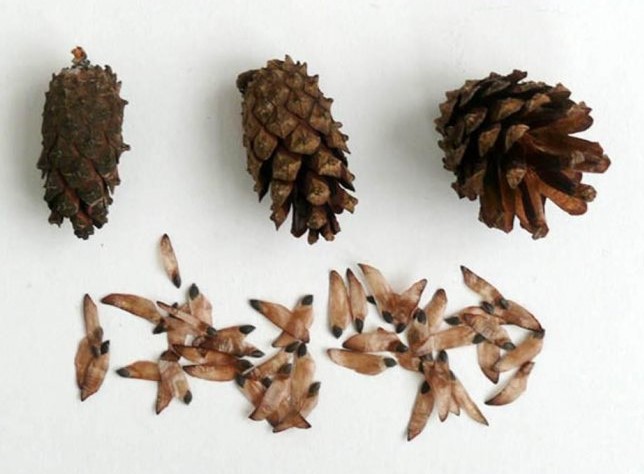
It is best to look for seeds in the forest in autumn. This applies to plants such as conifers and some deciduous trees - oak and others. Then the seeds need to be germinated. To germinate seeds for future bonsai, they must be placed in a favorable environment. To do this:
Soak the seeds in water for a few hours, then place them on a damp cloth. After a while, the seeds will swell and sprout.
Sprouted seeds should be planted 1-2 cm into the soil for plants. The seeds should be watered regularly, not allowing the soil to dry out. Within six months, the seeds will sprout and seedlings will appear.

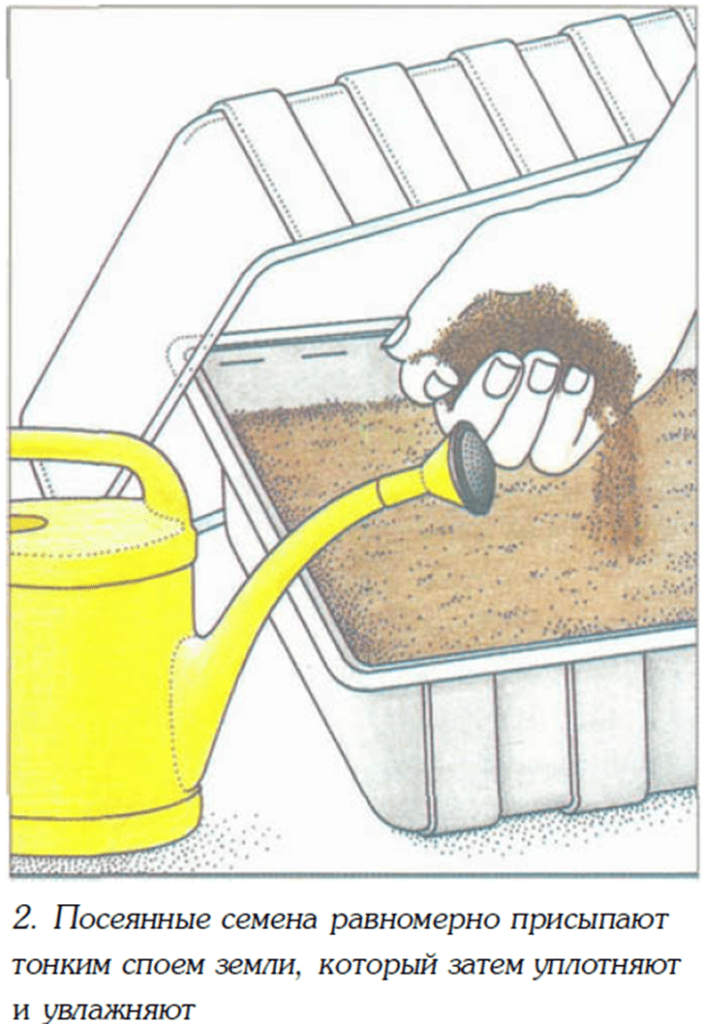
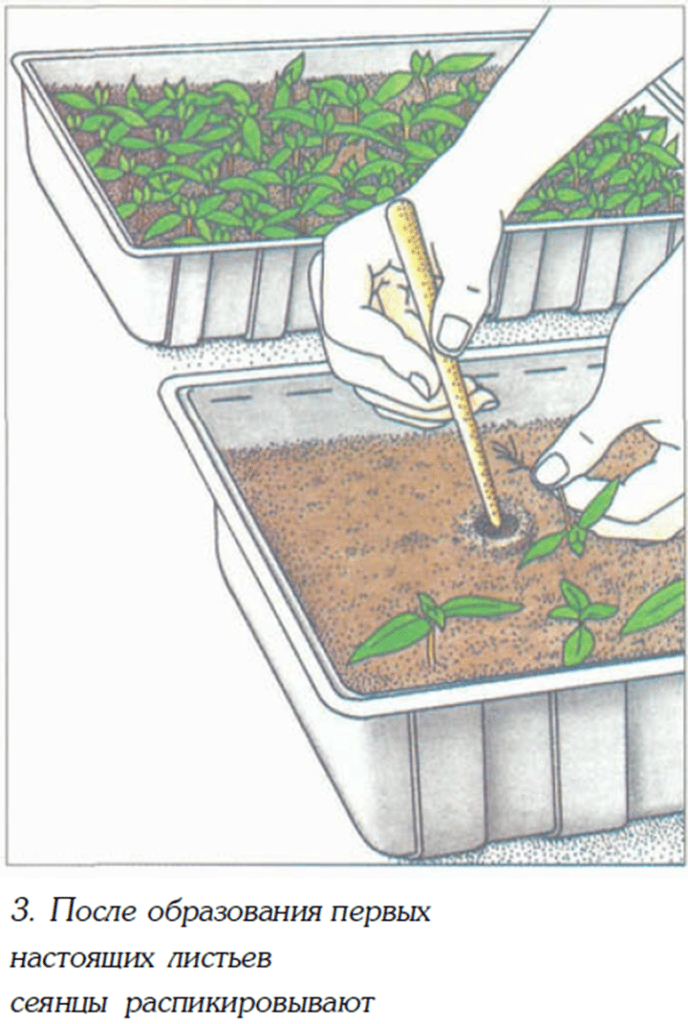
Start with seedlings
For beginners, it is recommended to start growing bonsai trees from seedlings. This simple and quick method of growing a tree eliminates the hassle of seeds and allows you to immediately begin the art of bonsai - shaping the trunk and crown.
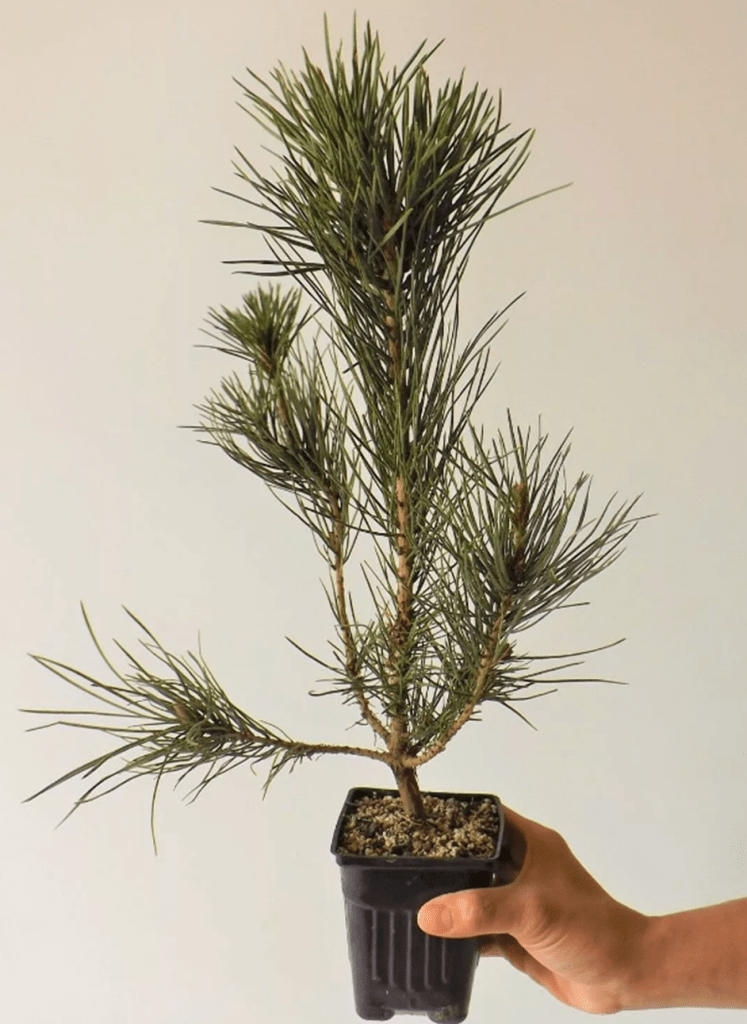
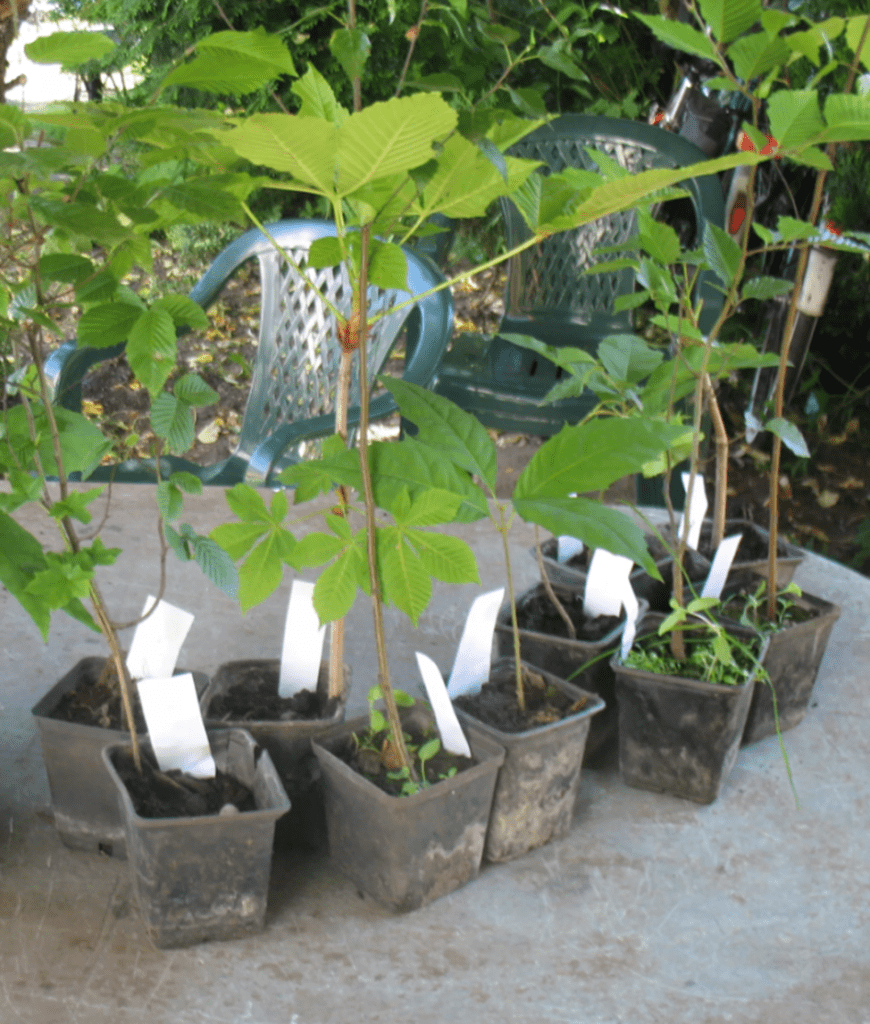
To grow a bonsai from a seedling, it must be approximately 15 cm long, its roots must be cut by 7 cm. The seedling should be planted in the soil, carefully straightening the roots and watered.
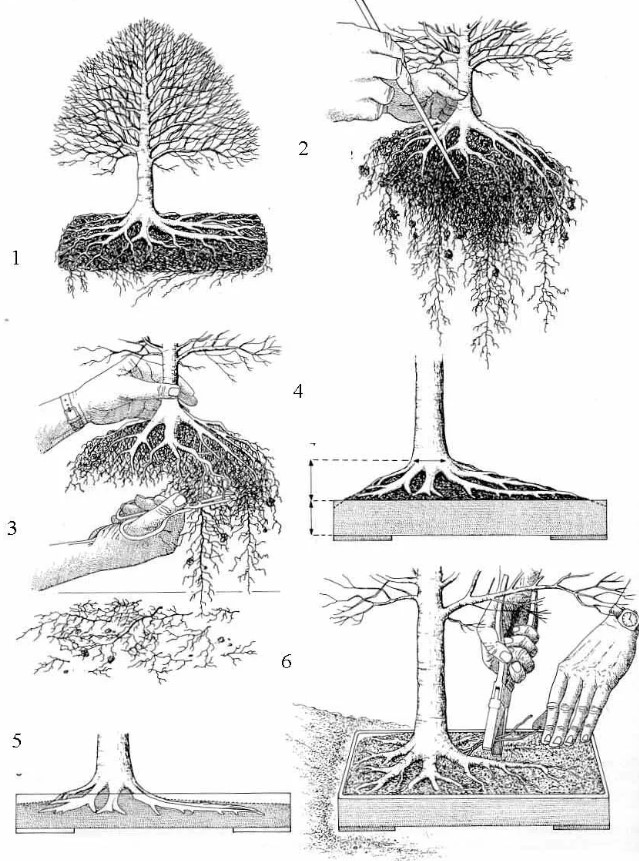
How to shape bonsai
In order to form a tree from a seedling that resembles a miniature copy of one growing in nature, it is necessary to use certain formation methods.
- Crown. To obtain a crown of bonsai, you should regularly trim and pinch the branches. You can read more about this in article.
- Tree trunk and branches. The method of applying wire to the trunk and branches will help to give the correct shape to the bonsai. The wire is applied in a certain way, and after some time it is removed, while the branches and trunk of the tree retain the shape of the wire.
- Roots. The roots of a tree are given special importance in the art of bonsai. The surface roots are called Nebari. Nebari gives the tree an aged look. The roots are especially beautiful when growing bonsai on a rock
- Special effects. Syari and the Genies — these effects allow you to artificially age a tree. Their essence lies in the artificial removal of bark from part of the trunk and branches of the tree. Parts of the tree dry out and the bonsai looks more like a tree growing in the wild, exposed to the negative influence of the elements.
Tools
Care and shaping of bonsai will require the purchase of a special kit. tools. Bonsai is not an ordinary plant, so the set of tools for shaping and care must be appropriate. Today, such tools can be easily purchased on well-known marketplaces.

The main problems and mistakes that beginners face
- DehydrationSigns of bonsai dehydration: yellow falling leaves, dry soil.
- Excessive moisture. Mold on the soil and the appearance of moss may indicate that you are watering the tree too often.
- Pest Invasion. Carefully inspect the leaves and branches for insects, some of which may be dangerous.
- Location in direct sunlight. Not all tree species need direct sunlight. The sun can dry out the soil and cause yellowing of the trees.
Growing Tips
If you are going to grow bonsai with your own hands, then the most important thing you need to worry about is timely watering and fertilizing.
Trying to grow several trees at once is not a good idea, as this will result in some of them not getting enough attention.
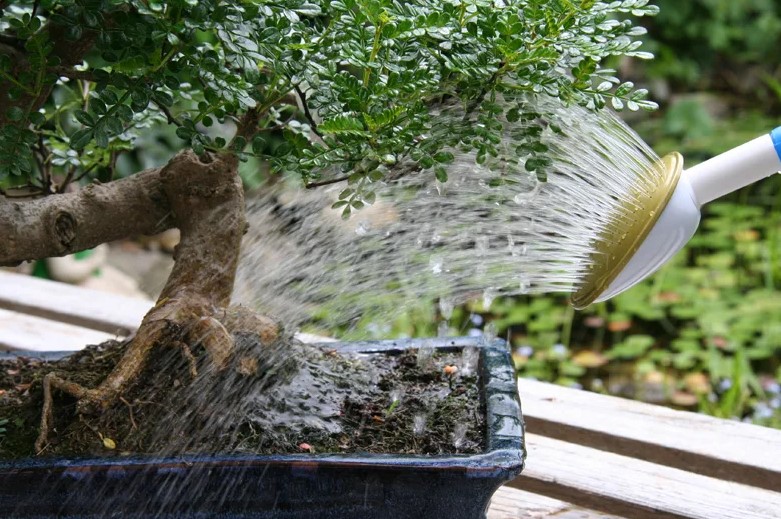

Watering bonsai you can use a watering can, use a drip irrigation system or even immerse the pot in water for a while. The most important thing here is that the soil does not wash away. As for fertilizing, mineral fertilizers should be used no more than 2 times a week.
Read more about fertilizers, when and how to use them in article.
| In spring and summer | In the fall |
| Fertilizers containing nitrogen Complex fertilizers Universal fertilizers | Fertilizers containing potassium and phosphorus |

